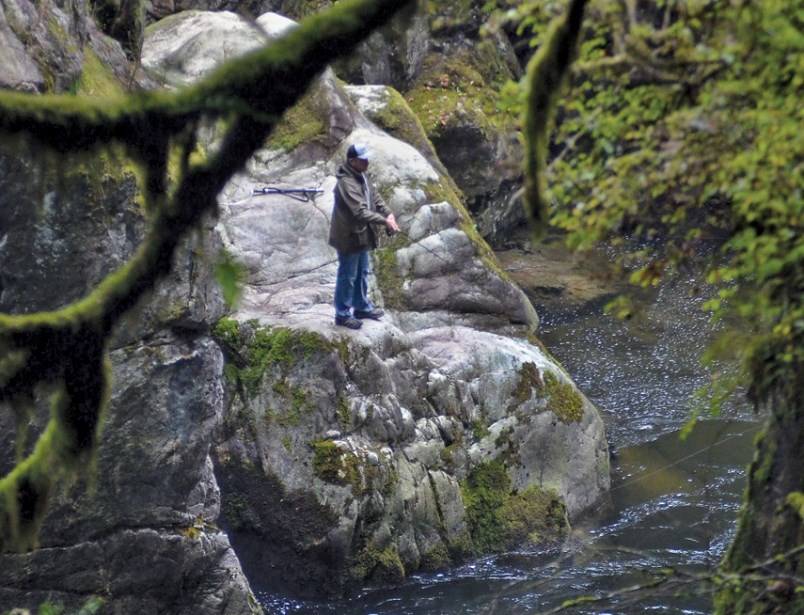Six months after a North Vancouver father and son were drowned in a torrent of water released from the Cleveland Dam, Metro Vancouver officials say they are planning to install warning alarms up and down the Capilano River.
On Oct. 1, 2020, a series of software and human errors on a dam maintenance project caused the spillway gate to open unexpectedly. Several anglers were swept into the river. Most were rescued but Ryan Nickerson, 61, died and his 27-year-old son Hugh was never found.
“We've heard loudly and clearly from many of the users and stakeholders that they had strong support for adding a public facing alarm system,” said Jerry Dobrovolny, Metro’s chief administrative officer. “We wanted to have that in place right away and before we raise the drum gate again to store water for the summer.”
Between now and May staff will be installing six 110-decibel alarms with flashing lights. They will be located at the dam itself, the Capilano River Hatchery, the bridge over Highway 1, the Fullerton Bridge, Marine Drive and at the Welch Street Bridge.
“They'll be in place so they can be activated if we ever have an unintended or a sudden release of water from the dam,” Dobrovolny said.
Residents along the Capilano River will hear the alarms as they’re tested for two weeks after the installation and then once a month at a lower volume for about five minutes at a time.
Metro Vancouver considered but ultimately rejected installing a warning system in the early 2000s following similar dam malfunctions. At the time, senior staff told the North Shore News they were “not satisfied that an audible alarm system could be put in place that would do what it is supposed to do without annoying the public.”
The alarms going in this month are only meant to be an interim solution, Dobrovolny added. Metro will be consulting with residents, experts, and people who regularly use the river for recreation on more permanent safety solutions. Options on the table include new “no access” boundaries, more signs, and moving or altering the types of alarms. Those consultations will begin in mid-May.
Dobrovolny said Metro staff have been in regular contact with the family of the victims and they have been supportive of the alarms being installed.
“We're certainly keeping them informed as we have engagement programs,” he said.
Additionally, Metro has set up a text and email alert system to warn of changing water levels. Anyone can sign up for either by visiting metrovancouver.org and searching Cleveland Dam Safety Enhancements Program or by texting “Join” to 604-757-0900.
To subscribe, however, residents are asked to click on a disclaimer in which they acknowledge the river and shoreline present “inherent dangers” including changes in water levels, fast flowing water, rocks and branches, which could lead to serious injury or loss of life.
“It's important to remember that this river and river valley have experienced major changes and flows, and have for thousands of years. It's not a function of the dam. It's a function of the geography,” Dobrovolny said.
The tragedy triggered multiple investigations from Metro Vancouver, the RCMP, WorksSafeBC, the BC Coroners Service and Association of Professional Engineers and Geoscientists, most of which are still ongoing, Dobrovolny said.



